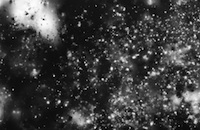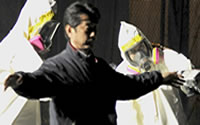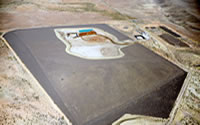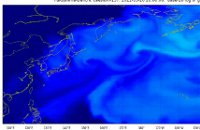Power of Configuration: When Infrastructure Goes Off The Rails
Jamie Kruse. . . things that never happened before are possible. Indeed, they happen all the time.

Image: courtesy of U.S. Air Force
Photo: Master Sgt. Kimberly Spinner
On November 11, 2011, the Institute of Nuclear Power Operations (INPO) delivered a timeline to an audience of U.S. industry executives, the Nuclear Regulatory Commission, and members of Congress. It detailed the unfolding of events at the Fukushima Daiichi nuclear power station during, and in the critical hours following, the earthquake and tsunami of March 11, 2011. The story contained within the document entitled, " Special Report on the Nuclear Accident at the Fukushima Daiichi Nuclear Power Station ," reads like a screenplay. The gravity of the immediate hours after the accident, detailed and delivered through stark legalistic language, confronts the reader with a poignant reminder: when things don't go as planned, human bodies are what must show up to try to steer things back on course.
The INPO report serves well as a reference manual for contemporary designers, architects, urban planners, and engineers. It's a powerful invitation to consider configuration in relation to infrastructure design and planning. Configuration: how and where we stage what we design, how humans and infrastructures are situated in relation to one another, and how they inevitably interact. Yet humans and infrastructures exist not only in relation to one another and the landscape, but also in relation to the multitude of earth forces capable of rising up and challenging our best design and engineering capacities.
TEPCO, the electric company that owned the Fukushima Daiichi plant, clearly had never imagined, nor planned for, the spectacular forces that materialized on March 11, 2011. Tsuneo Futami, a nuclear engineer who was the director of Fukushima Daiichi in the late 1990s, has stated, "We can only work on precedent, and there was no precedent. When I headed the plant, the thought of a tsunami never crossed my mind."
In the crucial minutes and seconds in which the unimaginable actually does unfold, highly complex situations transpire in instants. The configuration of people and things becomes fundamental to what happens. Reality shifts into a configurationist map-in-motion, a rolling landscape of trip wires and tipping dominoes. Each action, placement and location sends vectors of consequences propagating into the far future.
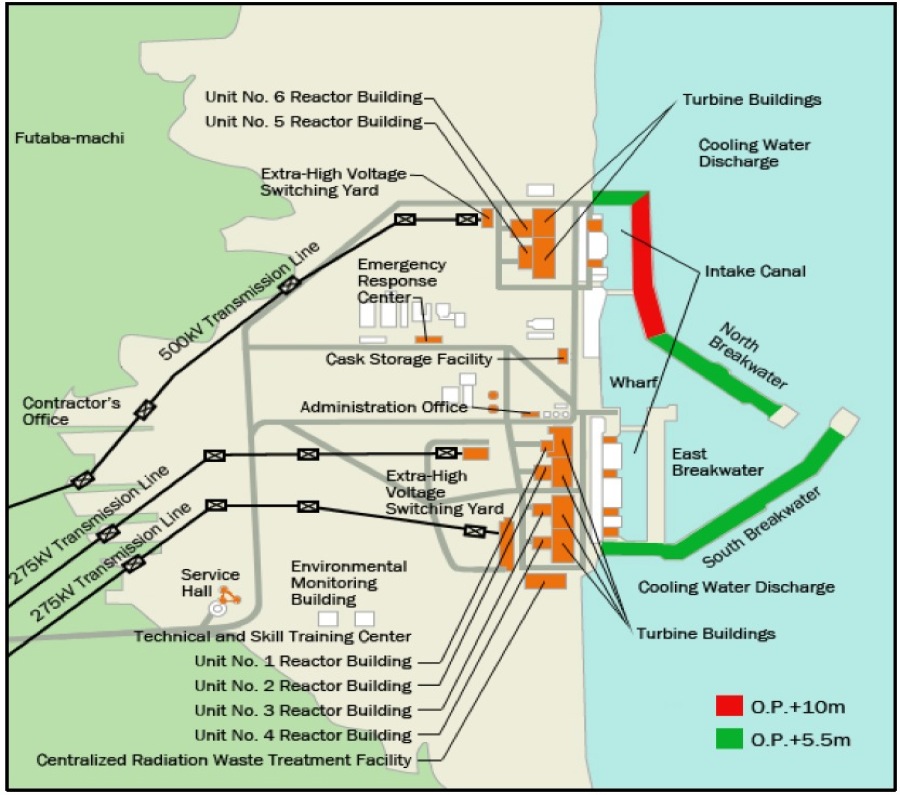
Image courtesy of the Institute of Nuclear Power Operations.
How high do the waves reach up the bluff? Where are the fire trucks parked in town? How far inland do the dry casks sit? How deep do the spent fuel rods rest in their cooling pools? How far are the plant's exit gates from here?
Where each building is sited in relation to each human, each fire truck, each monolithic sea wall, each wave - all matter immensely and in interconnected ways.
This highly particular configuration of things varies from moment to moment and is what will mix and ramify into the resulting "nexts." Water is no longer water, but a substance flooding basements storing backup generators. Utility employees become authorities, emergency personal, evacuees, heroes, and victims.
At Fukushima, the force and scale of the events reconfigured an energy generating plant, typically a life-supporting affordance, into something else, into something unrecognizable. Fukushima Daiichi shifted from being an energy-producing infrastructure into a risk-generating machine - with massive geologic consequence. The facility dissolved into an assemblage of unpredictable actants in the forms of zirconium rods, uranium, plutonium, hydrogen, salt water, copper, plate tectonics, massive waves, electricity, darkness, design ingenuity, engineering failure, steel, reinforced concrete, basements, and sea walls.
These elements not only performed independently of human desire, they acted back upon us in profound and irrevocable ways. Many of these things-become-forces continue to do so today, more than a year later. Some will continue to do so for generations to come.
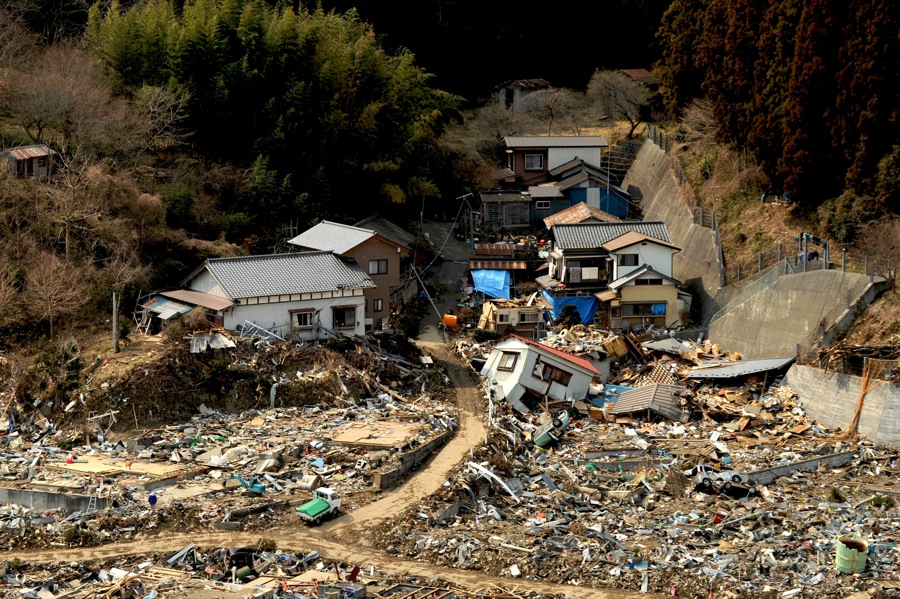
Image: courtesy of U.S. Air Force photo
Photo: Tech. Sgt. DeNoris A. Mickle
These actants compose the shifting trajectories of global energy futures as they birth new actants such as long-term power outages, evacuations, containment failures, explosions, aftershocks, media coverage, government regulations, industry investments, energy dependency, changes in public opinion.
An awareness is growing: long-term futures hinge on how we humans assemble with things that can unexpectedly reconfigure in a matter of micro-seconds. We are beginning to sense the necessity of acknowledging forces that extend deep below the earth's surface, and the relevance of timescales that exceed human time. As we begin to respond, we are prompted to consider: what if anticipating geologic scales of force, change and effect became a common design specification? What if energy production, policy-making, and infrastructure design projects began to account for lively and wildly unpredictable geologic actants?
Excerpts from the "Unit 1 Validated Event Timeline" (pages 71-80) in "Special Report on the Nuclear Accident at the Fukushima Daiichi Nuclear Power Station." All times are provided in Japan Standard Time (JST).
- 11-March 14:46
- Automatic reactor scram signal on seismic trip
- 11-March 14:47
- Automatic turbine trip on high vibration
- 11-March 14:47
- 6.9-kV bus 1D power loss
- 11-March 4:47
- 6.9-kV bus 1C power loss
- 11-March 15:27
- The first wave of a series of tsunamis, generated by the earthquake, arrived at the station.
- 11-March 15:35
- The second tsunami hit the station.
- 11-March 15:37
- Loss of all AC power occurs. Instrumentation and emergency systems gradually fail between 1537 and 1550.
- 11-March 15:37
- The loss of DC distribution systems results in the loss of control room indications and alarms.
- 11-March 15:37
- The control room lighting was lost and only emergency lighting remained.
- 11-March 15:37
- The control panel indications for HPCI were barely lit but slowly faded to black.
- 11-March 15:42
- TEPCO entered its emergency plan because of the loss of all AC power, in accordance with Article 10, paragraph 1 of the Nuclear Disaster Law. Government offices were notified. The corporate Emergency Response Center was established.
- 11- March 16:36
- Temporary batteries and cables were gathered and carried to the units 1 and 2 control room. After confirming the wiring layout using drawings, batteries were connected to instrument panels.
- 11-March 20:07
- Because there were no working indications in the control room, operators checked reactor pressure locally in the reactor building. Reactor pressure was 1,000 psi (6.9 MPa).
- 11-March 20:50
- Authorities of the Fukushima prefecture ordered evacuation of the population within a 1.2 mile (2 km) radius of Fukushima Daiichi.
- 11-March 21:19
- Water level indication was restored in the control room. Reactor water level was approximately 8 inches (200 mm) above the top of active fuel (TAF).
- 11-March 21:51
- Access to the reactor building was restricted because of high dose rates.
- 11-March 23:00
- A radiation survey identified dose rates of 120 mrem/hr (1,200 μSv/hr) in front of the reactor building north door on the first floor of the turbine building and 50 mrem/hr (500 μSv/hr) in front of the door to the south. The government authorities were notified at 2340.
- 12-March 00:06
- In the control room, operators assembled piping and instrumentation drawings, the accident management procedures, valve drawings, and a white board. The operators began to develop a procedure for venting, including how to manually operate the valves, and the associated sequence.
- 12-March 01:48
- At some point, the installed diesel-driven fire pump that was standing by to pump water into the reactor malfunctioned. In an attempt to restart the fire pump, diesel fuel was carried to the pump and the fuel tank was refilled, and batteries stored in an office were carried to the room and installed; but the pump would not start. Workers began considering using fire trucks to supply water to the plant fire protection system.
- 12-March 01:48
- The station had three fire engines, but only one was available to support injecting water into the Unit 1 RPV. One fire engine was damaged by the tsunami. The second fire engine was at parked adjacent to units 5 and 6 but could not be driven to Unit 1 because earthquake damage to the road and debris from the tsunami had restricted access between units 1 through 4 and units 5 and 6.
- 12-March 02:24
- In preparation for manually venting the containment, a radiological evaluation of working conditions in the torus room was provided to the ERC. With radiation levels at 30 rem/hr (300 mSv/hr), workers were limited 17 minutes of time in order to remain below the emergency response radiation limit of 10 rem (0.1 Sv). Workers were required to wear a self-contained breathing apparatus (SCBA) with a 20-minute air supply and would be given potassium iodide tablets.
- 12-March 03:45
- Workers attempted to enter the reactor building airlock door to perform surveys. As soon as the door was opened, workers saw steam and closed the door. No surveys were performed.
- 12-March 04:30
- The ERC informed the control room that field operations were prohibited because of tsunami warnings.
- 12-March 04:50
- Workers were directed to wear full-face masks with charcoal filters and coveralls when in the field.
- 12-March 05:44
- Radiation levels at the site boundary increased, and the Prime Minister expanded the evacuation zone around Fukushima Daiichi to 6.2 miles (10 km).
- 12-March 05:52
- A total of 264 gallons (1,000 liters) of fresh water was injected via the fire protection system.
- 12-March 06:30
- A total of 528 gallons (2,000 liters) of fresh water was injected via the fire protection system.
- 12-March 06:33
- TEPCO confirmed that some residents of Ookuma-machi, which is inside the evacuation zone, had not evacuated yet. The residents had not left because they were not sure in which direction to evacuate.
- 12-March 07:11
- The Prime Minister arrived at the station.
- 12-March 08:37
- The Fukushima Prefectural government was informed that venting would start at approximately 09:00. Venting was being coordinated to ensure the evacuation was completed prior to venting commencing.
- 12-March 09:03
- The control room operators formed three teams to perform the venting, with two operators on each team (one to perform actions and the other to assist by holding flashlights and monitoring dose rates and for other safety concerns, such as ongoing aftershocks). Because there was no means of communicating with the field teams, the decision was made to dispatch one team at a time, with the next team leaving only after the preceding team returned.
- 12-March 09:30
- The second team of operators was unsuccessful in the attempt to manually open the suppression chamber air- operated vent valve. The operators entered the torus room but had to turn back because they expected they would exceed their 10 rem (100 mSv) dose limit.
- 12-March 11:39
- The government was notified that one of the operators who had entered the torus room to attempt to vent the PCV had received 10.6 rem (106 mSv) radiation dose.
- 12-March 15:36
- A hydrogen explosion occurred in the reactor building (secondary containment).
- 12-March 15:36
- The explosion caused extensive damage to the reactor building and injured five workers. Debris ejected by the explosion damaged the temporary power cables, along with one of the large portable generators. The temporary power supply for the standby liquid control system and the hoses that had been staged for seawater injection were damaged beyond use. Although the fire engines were damaged, they were still usable. The injured workers were carried to safety. Station workers, including the personnel working on the standby liquid control system and laying temporary power cables, had to evacuate for an accountability. The area surrounding Unit 1 was strewn with highly radioactive debris, so cleanup required support from radiation protection personnel.
- 12-March 16:27
- Radiation dose rates at the monitoring post reached 101.5 mrem/hr (1,015 μSv/hr), which exceeded the 50 mrem/hr (500 μSv/hr) limit specified in Article 15, clause 1 of the Act on Special Measures Concerning Nuclear Emergency Preparedness (abnormal increase in radiation dose at the site boundary). This was reported to the authorities.
- 12-March 18:25
- The Prime Minister ordered the population within 12.4 mile (20 km) radius of Fukushima Daiichi Nuclear Power Station to evacuate.
- 12-March 18:30
- Field inspections revealed the area around the units was littered with debris, and the equipment that had been staged to provide power to the standby liquid control system and hoses staged to inject seawater had been damaged and were no longer usable.
- 12-March 19:04
- The injection of non-borated seawater into the reactor commenced using the fire engines.
- 24-March 11:30
- Lighting was restored to the units 1-2 control room.
- 25-March 15:37
- Reactor injection was changed from seawater to fresh water.
Forty-one minutes after the earthquake, at 15:27, the first of a series of seven tsunamis arrived at the site. The maximum tsunami height impacting the site was estimated to be 46 to 49 feet (14 to 15 meters). This exceeded the design basis tsunami height of 18.7 feet (5.7 meters) and was above the site grade levels of 32.8 feet (10 meters) at units 1-4 (p. 3).
The tsunami design basis for Fukushima Daiichi considered only the inundation and static water pressures, and not the impact force of the wave or the impact of debris associated with the wave. The design included a breakwater, which ranged in height from 18 ft (5.5 m) to as high as 32.8 ft (10 m), as shown in Section 1.1 (p. 47).
The Act on Special Measures Concerning Nuclear Emergency Preparedness (commonly referred to as the Nuclear Disaster Law) was established in 1999 in response to the September 30, 1999 inadvertent criticality accident at the Tokai uranium processing plant. The accident resulted in overexposure of three plant workers and additional unplanned exposures to 66 plant workers, local inhabitants, and emergency support personnel (p. 67).
back to top ↑References
- Bennett, Jane. 2011. Vibrant Matter: A Political Ecology of Things. Durham: Duke University Press.
- Onishi, Norimitsu and James Glanz. 2011. "Japanese Rules for Nuclear Plants Relied on Old Science," The New York Times, 26 March, http://www.nytimes.com/2011/ 03/27/world/asia/27nuke.html.
- Perrow, Charles. 2011. "Fukushima, Risk, and Probability: Expect the Unexpected," Bulletin of the Atomic Scientists, 1 April, http://www.thebulletin.org/web-edition/features/fukushima-risk-and-probability-expect-the-unexpected.
- Institute of Nuclear Power Operations. 2011. "Special Report on the Nuclear Accident at the Fukushima Daiichi Nuclear Power Station," Nuclear Energy Institute, Accessed 11 November, http://www.nei.org/resourcesandstats/documentlibrary/
